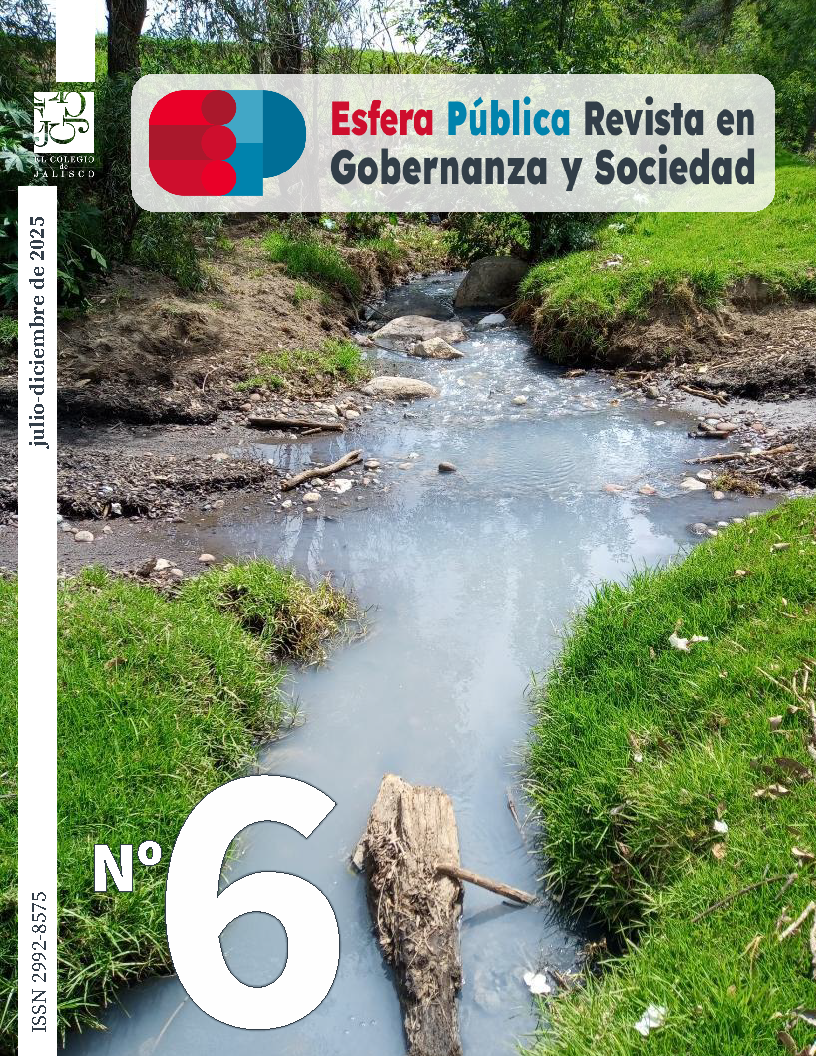Evaluating the effectiveness of governance: integration of qualitative and quantitative approaches
Main Article Content
Abstract
The essay examines the integration of qualitative and quantitative methods in the continuous improvement of government. Starting from the neoliberal legacy of optimisation processes, it underlines the urgency of adopting mixed methodologies and clarifies the conceptual differences between measurement, evaluation, and analysis. It then analyses the “three Es” — efficacy, effectiveness, and efficiency — and relates them to governability, governance, and public administration. Finally, it critiques the traditional paradigm of measurement and proposes a new model of governance evaluation: one that actively incorporates citizen participation, promotes transparency, and fosters adaptability to more accurately reflect specific dynamics and contexts.
Article Details
Issue
Section

This work is licensed under a Creative Commons Attribution-NonCommercial 4.0 International License.
How to Cite
References
Aguilar Villanueva, L. (2022). Acerca del Gobierno. Propuesta de teoría. Tirant lo Blanc.
Aguirre, J., Infante, J. M., & de Ita, L. (abril, 2019). Medir la gobernanza: un acto a favor de la calidad de la democracia. Gobernanza, 45, 25-58. https://www.aigob.org/2019/04/09/medir-la-gobernanza-un-acto-a-favor-de-la-calidad-de-la-democracia/
Aguirre Sala, J. F., Infante Bonfiglio, J. M., & de Ita Rubio, B. L. (2020). La capacidad de respuesta estatal a la voluntad ciudadana como indicador de gobernanza en la calidad de la democracia participativa. Colofón SA de CV.
Barabasi, A. L. (marzo, 2019). What we can learn from people who succeed late in life. Forbes Editorial. https://www.forbes.com/sites/nextavenue/2019/03/12/what-we-can-learn-from-people-who-succeed-late-in-life/#1a4723910141
Camou, A. (2020). Gobernabilidad y democracia. Instituto Nacional Electoral.
Crozier, M., Huntington, S., & Watanuki, J. (1975). The crisis of democracy. Report on the governability of democracies to the Trilateral Commission. University Press.
Cuevas, J. (2015). El Kamasutra de la innovación. Guía disruptiva para transformar vidas y negocios. Penguin Random House.
DeGraff, J. (2017). The innovation code: The creative power of constructive conflict. Berrett-Koehler Publisher.
Denzin, N., & Lincoln, Y. (1994). Handbook of qualitative research. Sage.
Diaz Thome, L. (2021). Mix and Match. Una alternativa de solución para potenciar la tasa de éxito de las innovaciones en el mercado (Tesis de grado).
Drucker, P. (2002). Escritos fundamentales. El management. Sudamericana.
Friedman, M. (2002). Capitalism and freedom: Fortieth anniversary edition. University of Chicago Press.
Fund For Peace. (2023). Fragil State Index. Fund for Peace.
Hall, T. (2016). Breakthrough innovation. Nielsen.
Harvard Business Review. (19 de octubre de 2015). To encourage innovation, stop punishing failure. Harvard Business Review.
IBM. (2000). Guía para el desarrollo de software en IBM. IBM.
Kooiman, J. (2005). Gobernar en gobernanza. En A. Cerrillo i Martínez (Coord.), La gobernanza hoy: 10 textos de referencia (pp. 83-99). Instituto Nacional de Administración Pública.
Ries, E. (2011). El método Lean Startup (Vols. ISBN-10: 842340949X). Deusto México.
Rohrer, C. (2014). When to use which user-experience research methods. Norman Nielsen Group.
Schwaber, K. (2016). La guía definitiva de Scrum: Las reglas del juego. Scrum Org.
Scriven, M. (1991). Evaluation thesaurus (4th ed.). Sage.
Stevens, S. (1951). Handbook of experimental psychology. Wiley.
Zamitiz, H. (2021). Un balance de gestión gubernamental. Enrique Peña Nieto (2012-2018). Facultad de Ciencias Políticas y Sociales.

